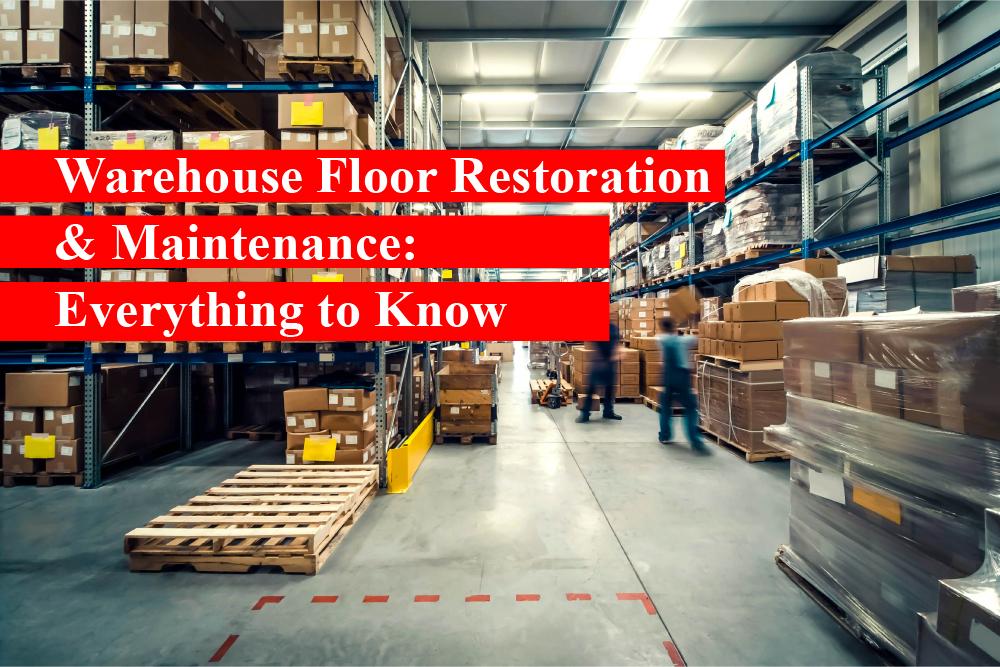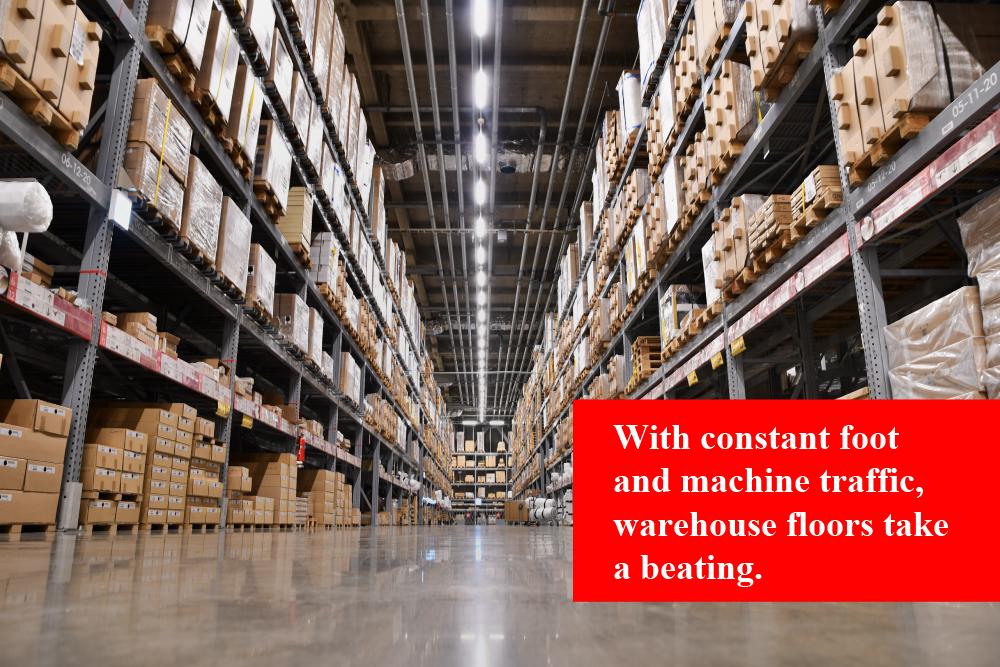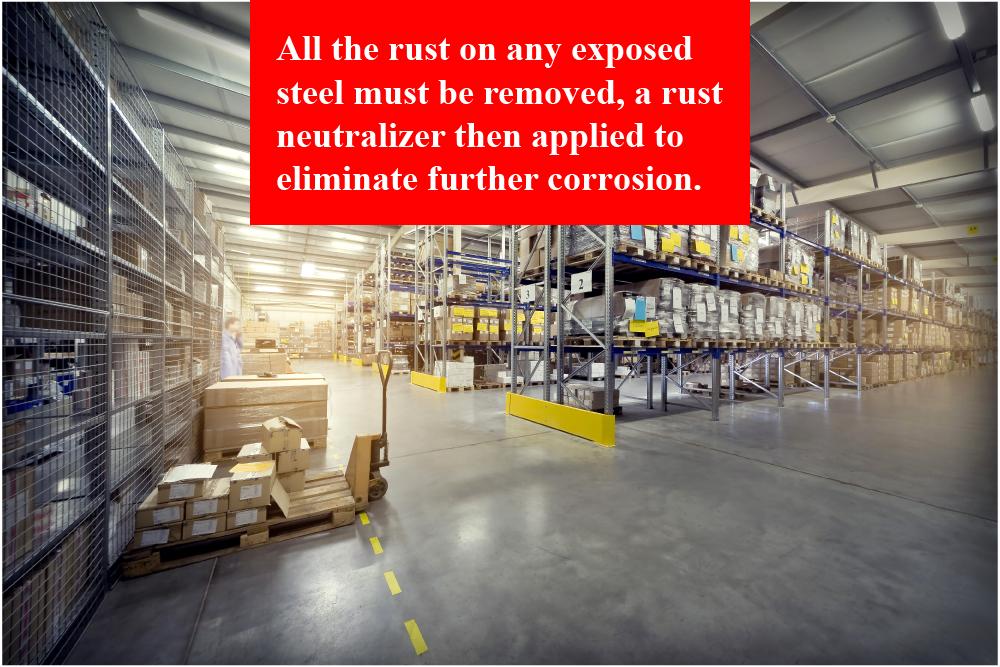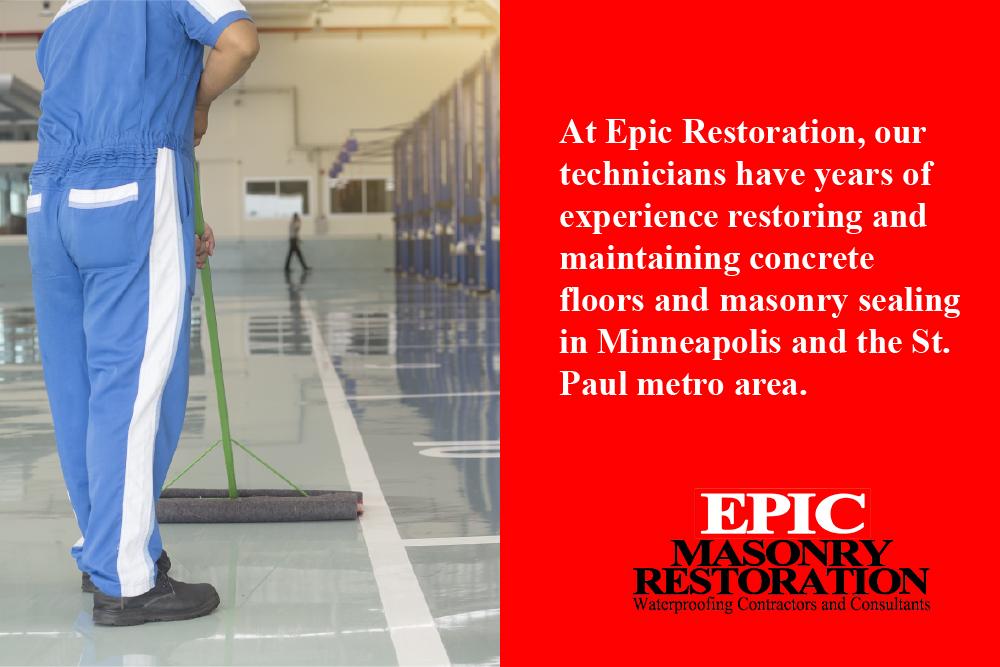
Is Floor Restoration Necessary?
Concrete is one of the most durable and dynamic construction materials ever invented. The addition of embedded steel reinforcing bars, commonly called “rebar”, has allowed concrete to become the go-to material for most commercial construction projects. Because of its strength and durability, concrete is used almost exclusively for constructing commercial floors for warehouses. However, concrete floors can quickly become a safety hazard if not properly cared for.
With constant foot and machine traffic, warehouse floors take a beating. Evidence provided from industry studies shows that well over 2.5 million workplace injuries have occurred per year since 2018, with many of those resulting from slips and falls due to failing concrete floors. To help you avoid costly repairs and liability issues, here is everything you need to know about warehouse floor restoration and maintenance.

Concrete Benefits and Issues
Concrete is amazingly durable compared to most other flooring materials, is incredibly cost-effective, and typically requires less maintenance than other flooring materials. However, concrete is subjected to several environmental and man-made challenges, which has spawned many misconceptions. Here are four common fallacies regarding concrete:
Fallacy #1: Cement and Concrete are the Same
The terms concrete and cement are often incorrectly used interchangeably, but cement is just one component in concrete that is mixed with sand, gravel, and crushed stones.
Fallacy #2: Concrete is Best Cleaned with a Mop and Plain Water
Like any flooring material, concrete gets soiled. Due to its porous nature, it absorbs everything from dirt to spilled liquids. Once contaminants become worked into the surface, a cleaning agent must be used to thoroughly clean the concrete.
Fallacy #3: Applying a Sealant Won’t Prevent Deterioration
Applying a commercial masonry sealing to the floor will extend the service life of the concrete immeasurably as the sealant prevents contaminants and moisture that can damage the concrete and rebar from seeping into the pores. Additionally, a properly sealed floor will be easier to clean and maintain.
Fallacy #4: Concrete Floor Maintenance Programs Aren’t Necessary
While the material is a very low-maintenance product, concrete floors are not maintenance-free. If the floor is not properly sealed and regularly cleaned, either by hand or with a machine, daily use will leave the floor with unsightly stains and the ground in dirt and chemicals absorbed into the surface can lead to cracking and a condition know as “spalling” where the material begins to flake off the surface.
Other Issues
Extreme regional temperature fluctuations, like those seen in the Upper Midwest, can have a severe impact on concrete and masonry. The constant freeze-and-thaw cycle can result in concrete shifting that can cause cracking, pitting, and surface spalling. While steel rebar adds strength and allows the concrete to flex without cracking, metal also introduces the possibility of corrosion. If water or other liquids seep into the concrete, rust can cause the steel reinforcing bars to deteriorate. The consequences of these effects can be devastating if left unchecked, with catastrophic failure often being the result. To reduce the risk of injury and damage, concrete floors must be properly maintained. However, the first step in any restoration project or maintenance program is a thorough cleaning so the floor can be properly assessed.
Cleaning Procedures
Concrete is extremely pourous by nature and, over time, will absorb virtually anything that comes into contact with it. During the cleaning process, care must be taken to thoroughly clean out all cracks as these tend to trap contaminants and moisture that cause bacteria and odors. If multiple floor-care products are used, cleaners and sealers from the same manufacturer should be used as these are often chemically designed to work together.
Concrete Floor Restoration
Any damage to the concrete and the supporting rebar must be repaired to restore the floor’s ability to support the load it was intended to. All the rust on any exposed steel must be removed, a rust neutralizer then applied to eliminate further corrosion, and all breaches in the concrete must be properly patched. Once the damage has been repaired, the floor must be thoroughly sealed to help keep further contaminants from seeping into the concrete.

Finishing: Coating and Sealing and Polishing
While warehouses are built for functionality, studies have shown that a business that have a neat and clean appearance have higher employee morale and increased appeal to customers. Finishing with a masonry sealing product will enhance a concrete floor’s appearance, make it more resistant to damage and help to prevent discoloration. Epoxy floor coatings are a great way to achieve a high-sheen finish that is attractive and easy to maintain. Concrete coatings come in various colors and designs, such as paint flakes and metallic finishes. Epoxy coatings are designed to be stain-resistant, making chemicals and oil spills easy to clean up, and quartz epoxy floor coatings provide additional durability and strength.
Sealing Floors to Reduce Wear
Concrete floors have historically had a plain unfinished surface that encouraged the material to absorb dirt and grime. The surfaces of today’s concrete floors have a new look and are often stained to increase both aesthetics and durability. Waterproofing masonry sealing coatings provide superior protection against water infiltration from hydrostatic pressure.
Commercial masonry sealing will help keep contaminants and moisture from working into the concrete and make cleaning the floor easier. Many types of sealer coating have additives that create a non-slip surface that drastically reduce the risk of slips and falls. Masonry sealing products should be applied to newly repaired and/or cleaned surfaces to protect the surface from absorbing dirt and contaminants like salt and solvents. If an impregnator, sealant, and a finish are applied, the floor will need to be buffed to create a shine.
Polishing
Polishing concrete helps to keep the floor free of build-up, and the shine improves visibility which helps to reduce the risk of injury. Concrete floors can be polished using a standard floor scrubbing machine using special pads and polishes. Polishing is easy to perform, requires no specialized equipment, and is incredibly cost-effective. Once the damage to the concrete has been repaired and properly finished, the floor must undergo regularly scheduled maintenance to prevent new damage.
Ongoing Maintenance After Floor Restoration
Once the floor has been restored, a regular maintenance schedule should be adhered to to keep the concrete in top condition. Concrete floors should be swept or vacuumed regularly to keep debris from building up on the surface and working its way into the concrete. For areas with high traffic, floors should be swept or vacuumed and mopped daily with recommended cleaning products. Floors with less traffic should be cleaned at least weekly. Choose concrete cleaning products with a low-friction lubricant, making it easier to move the machine over the floor.
Keeping your concrete warehouse flooring in top condition is about consistency and taking a proactive approach. Maintaining a safe work environment is critical in preventing injuries. A smooth, well-maintained floor reduces the risk of accidents and lawsuits. At Epic Restoration, our technicians have years of experience restoring and maintaining concrete floors and masonry sealing in Minneapolis and the St. Paul metro area. Visit us online at epicmasonryrestoration.com or give us a call at 612-662-7420 today to schedule a consultation.

